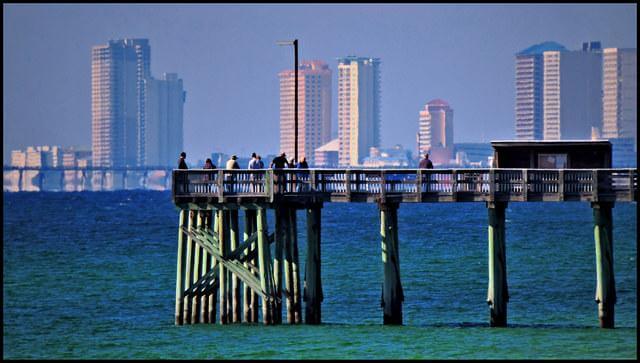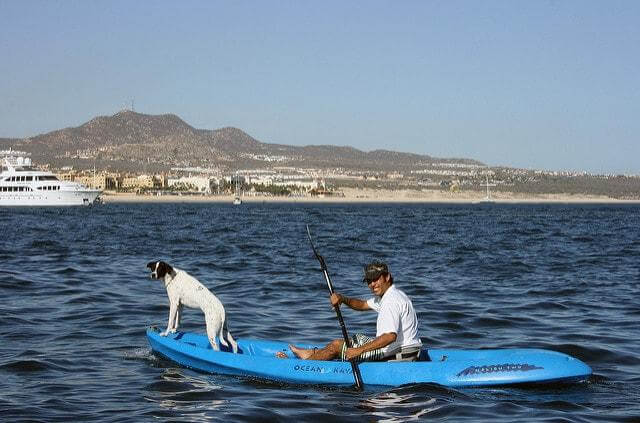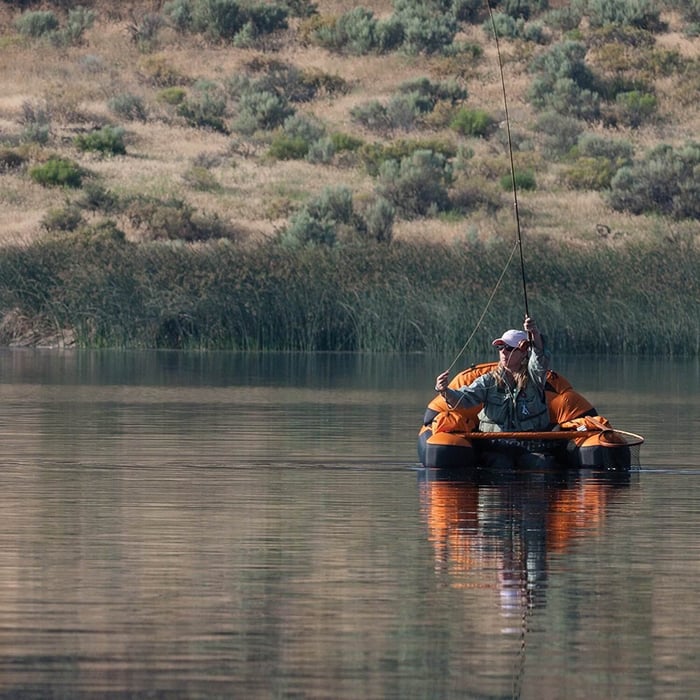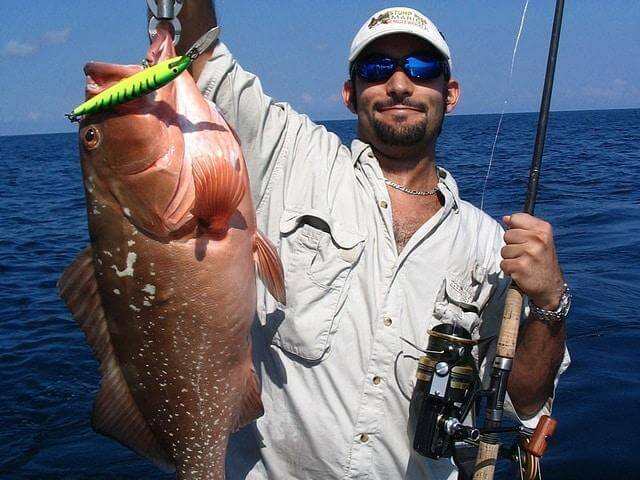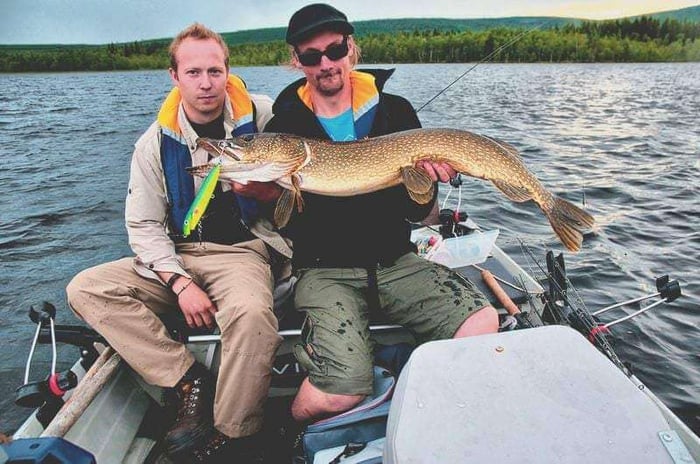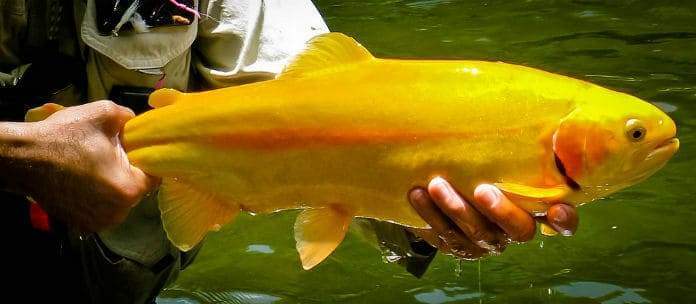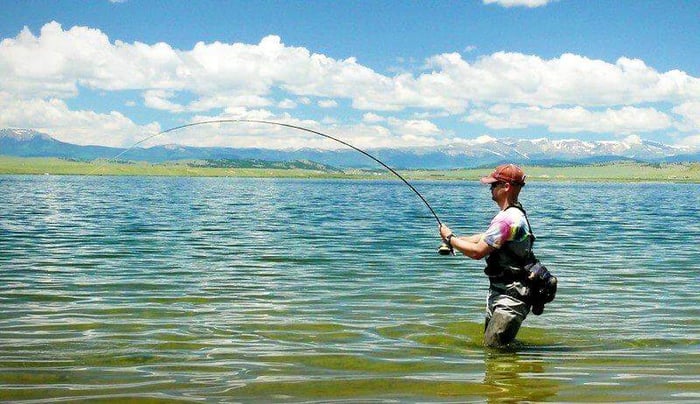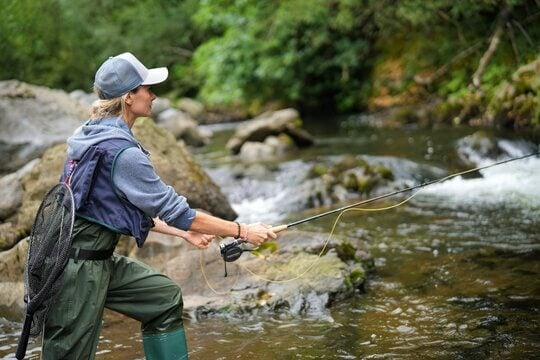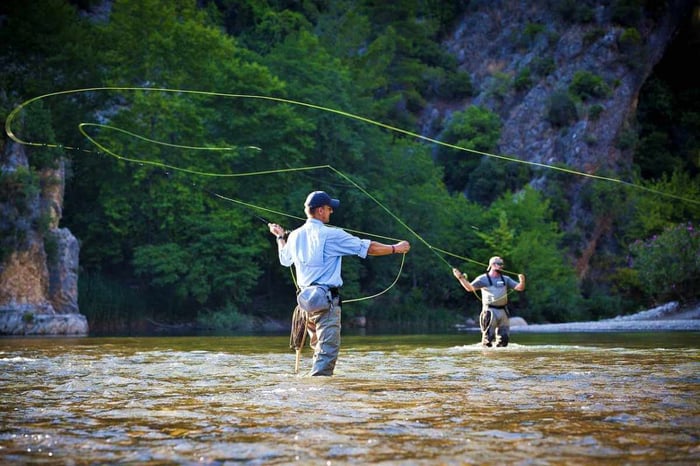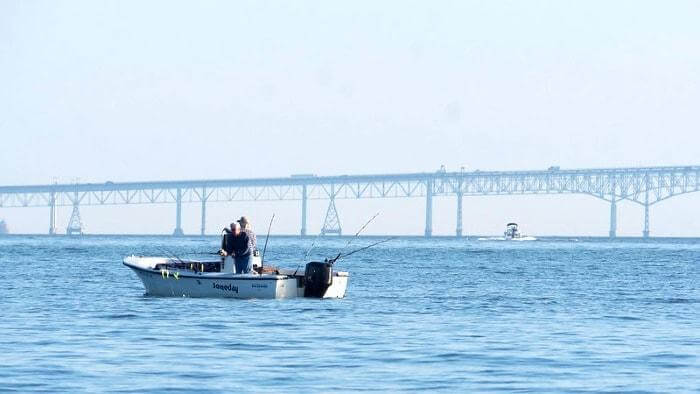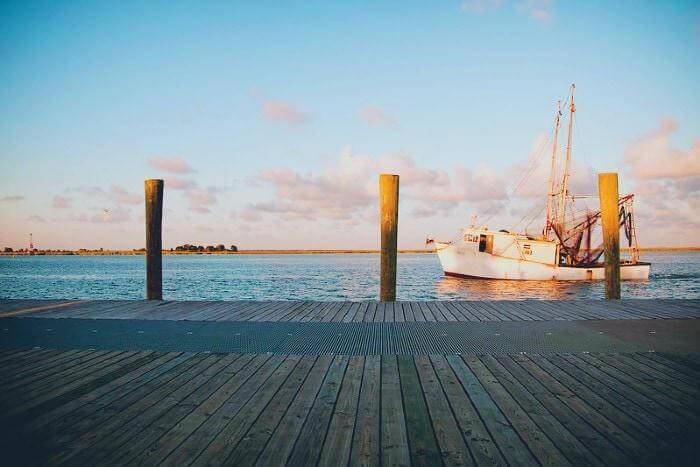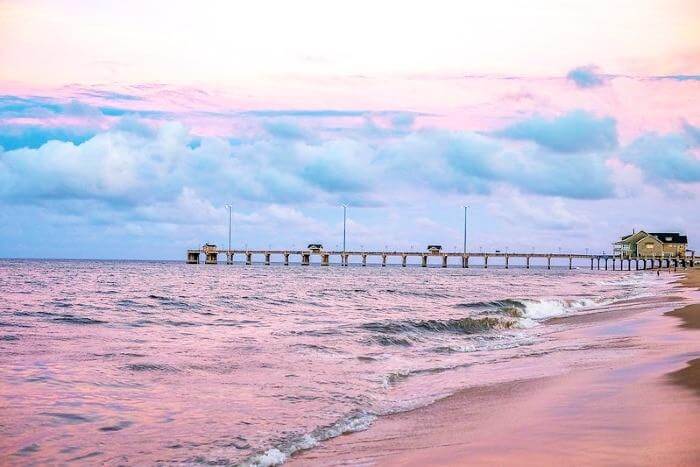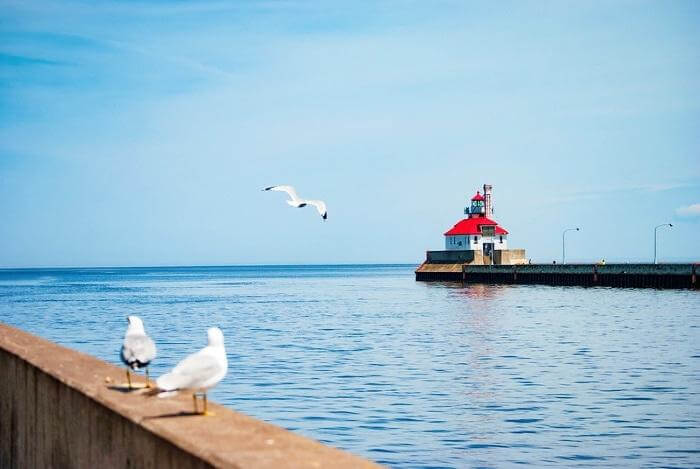Most young anglers start fishing in freshwater bodies like ponds, rivers, creeks, or lakes. Small rural farm ponds can be great to learn and harness fishing skills and techniques. Once they can master angling techniques such as the excellent bait presentation or reel-casting, they can move to more challenging water-the saltwater in the sea.
But, if they don't have any other testing water for fishing, saltwater is still an excellent starter for anyone who wants to learn fishing. Once they get the hang of it, there is an even higher chance of getting addicted to pursuing a wide variety of fishes. The sea can offer that kind of variety than any other fishing area.
Don't miss our Big Sales on Fishing Reels.

Saltwater Fishing for Beginners
The popularity of fishing as a recreational pastime in America has outnumbered tennis, golf, and sailing enthusiasts. Saltwater fishing has drawn 25 million anglers in the country in a year. The large fish choices and vast sea area make it an incentive for most anglers to drive it.
Whether they are just fly-fishing for flounder or tuna or just fishing through skinny water of the intertidal flats with trout or redfish, saltwater fishing can seem virtually limitless.
However distant you are fishing, deep fishing, drifting for half a mile from the shore, or just surf fishing onshore in the pier or bridge, you will need the proper gear and techniques to the circumstances at hand.
Fishing Gear and Saltwater
The first thing to consider in bringing which gear is understanding the difference between freshwater fishing and saltwater fishing. The salt in saltwater quickly corrodes the metal resulting in rust. Your reel and fishing rod may be at stake here. The good news is that you can prevent this. Wash any metal gear with freshwater or tap water once you return home.
Also, spraying your gear afterward with silicone-based lubricants like WD-40 guarantees the long life of your gear. Saltwater tackle is generally stronger than gear designed for use in freshwater, but you must still do your part to keep it functional.
Bottom Fishing and Fishing Rig

As the name suggests, Bottom fishing involves catching fish from the bottom of the seafloor. This is the best way to catch amberjack, snapper, grouper, and many others.
Bottom fishing can be a hit-or-miss game – a test of patience, cleverness, and skill. While finding bottom fish requires knowledge of the area you're fishing in addition to tactical drifting and anchoring, keeping fish on the line is a whole other story should you manage to get a bite.
Bottom fishing requires patience, skill, and cleverness. It is a hit-or-miss game that requires understanding your prey and gear. You must handle your gear strategically to keep the fish on the line.
When fishing in deep water reefs, the fishes may be strong and relentless that may push your tackle to its limits. You can have the best rods and reels on hand, but if your rig is not designed as steadfast and for bottom fishing, bottom fishing is a waste of time.
The quality of the rig that you drop into the deep affects your success. Perfect knots, quality terminal tackle, and premium leader material are essential yet give significant impacts to baiting large bottom fishes.
Although there are several kinds and variations in bottom rigs, four highly effective versions are listed below that will lure more large groupers, snappers, cobia, and amberjack around reefs, wrecks, and other structures.
Bottom Fishing Rigs for Beginners
Three-Way Swivel Rig
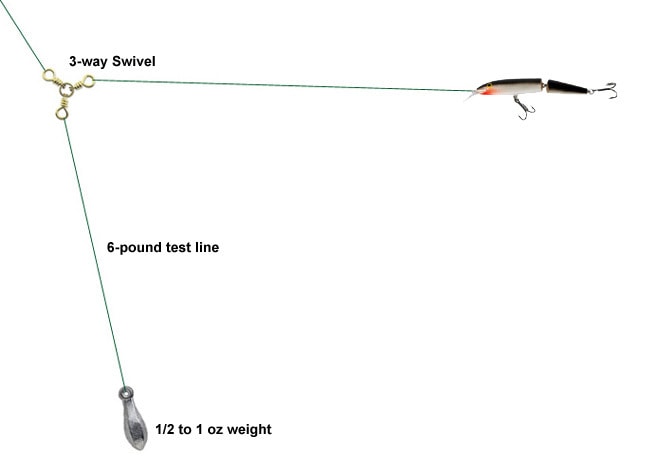
If you have large live baits, this rig is a good choice. To make it effective, you need a robust three-way swivel (80b to 130lb), a strong circle hook, about 15′ to 20′ of fluorocarbon, a 12″ piece of 20lb monofilament, and a bank sinker of 16 oz to 24 oz.
Use a light line. It has less friction with the water that sinks quickly to the bottom without many lines. Tie two 2.5-foot pieces of line to the three-way swivel. Use the 2-oz weight on one line and a light lure on the other. You need to put a small ordinary swivel on the lines to prevent them from being twisted.
Longer leader lines seem to perform better when there is a strong current. This is because it keeps the bait away from the weight. Moreover, if you are dropping a big bait, make sure to bridle it to the hook to prevent it from wiggling on the way down.
Although you can drop the rig straight down, it's better to drop it slowly so the bait trails behind the entire rig and doesn't spin. If the bait is spinning, you drop it too quickly, or the leader line is too short.
Knocker Rig

This rig is known for small snappers like red, gray, and yellowtail. It is a good choice when fishing in reefs or close to wrecks. These are the areas where a variety of fish is most likely caught.
The fishing line is tied to a barrel swivel for this rig. A leaser measuring less than ten feet is tied to the swivel's opposite eye. Then, followed by the leader in the egg sinker, then the hook. This egg sinker slides down toward the swivel after the rig has been cast out. There must also be a little distance between it and the hook.
The short leader can also provide an effective catch because it prevents the fish from diving back once the hook is already set. This rig requires a quick reaction on the angler's part. This is a classic bottom rig used for all kinds of bottom species.
The advantage here is that the leader can slide while the fish takes the bait. This allows the circle hook to set effectively. Once you feel the strike, you have to be quick in tight to prevent the fish from diving back to the water again.
The strike is very distinct when fishing a knocker rig because you feel the bite and the fish swimming away. As with most bottom fishing, the key is getting tight quickly and keeping constant pressure on the fish once it's hooked. Knocker rigs can be fished effectively on spinning or conventional tackle, but whatever gear you're using makes sure the reel has a fast retrieval ratio.
The faster you pick up the line, the more likely to keep the fish on the hook.
In-Line Snapper Rig/ The Florida Rig/ The Fish Finder Rig
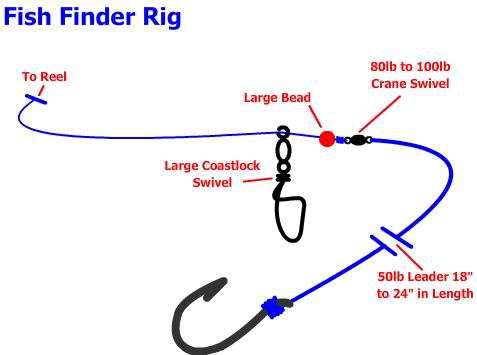
This rig features a 25-feet long leader who is ideal for catching snappers. The long leader also allows live bait that can still be free. As the in-line egg sinker rests on the bottom, the bait flutters above it some 15 to 25 feet back. It is also an adequate gear when fishing the bottom well up to the current of a wreck or reef.
If a suspicious fish tries to bite at the bait, the long leader play stops any resistance from the fish. This rig works well with a 16-ounce sinker. For a snapper, a 50-pound fluorocarbon and an 8/0 super-strong hook are good to use. This is like the knocker rig. This setup keeps the weight a little farther from the hook all the time.
The weight is added to the mainline, and then a small bead follows before being tied to one end of the barrel swivel. The mainline can pass through the egg sinker. This setup still enables the fish to swim freely once hooked.
This kind of rig is commonly used for snappers, but it can also be effective for groupers. As the fish bites the bait, they can swim away without the resistance of the weight. If the bait size is matched to the size of the circle hook, this is a perfect bottom rig.
A 15′ to 25′ segment of leader material separates the hook from the swivel. It allows plenty of lines for the bait to move with the current. The trick here is to let the bait feed out with the current away from the weight rolling around on the bottom.
Deep Drop & Chicken Rigs
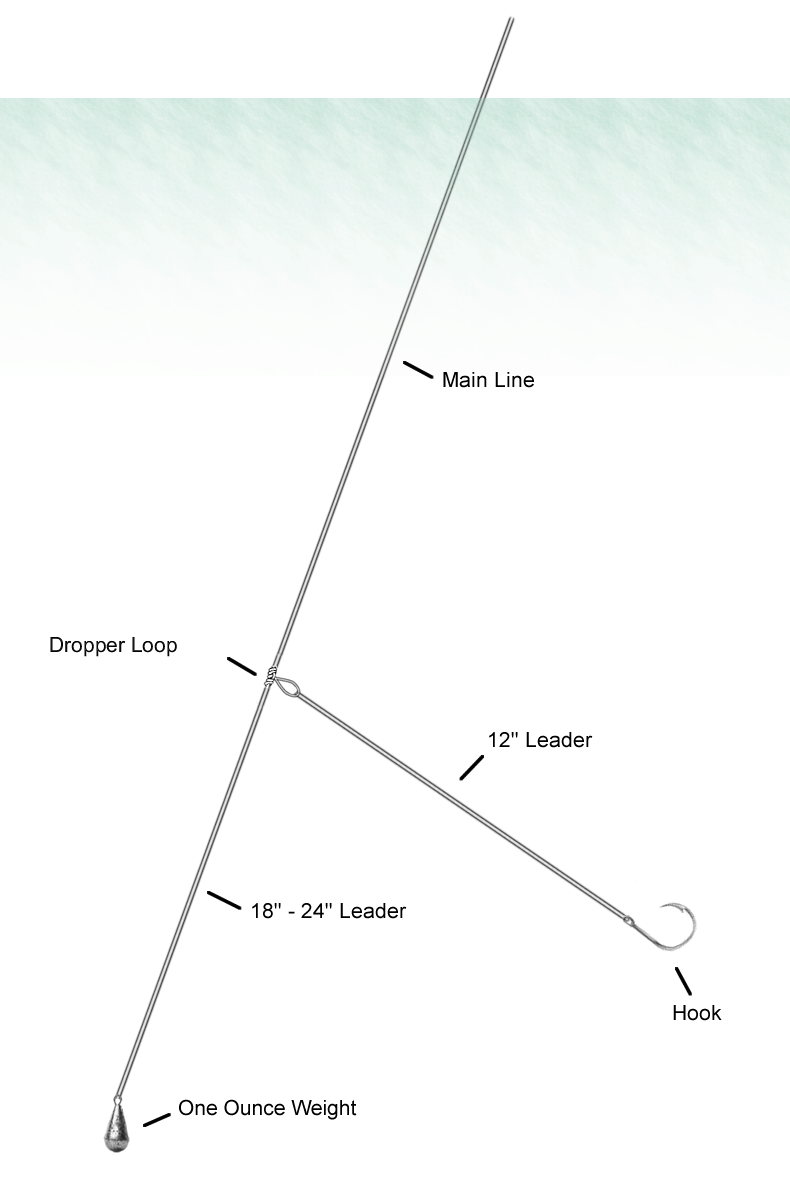
This is a straightforward, no-frills, deep-dropping rig. It is like a "Top and Bottom" rig on steroids. Many drop rigs are, but the most common variation is the "Chicken Rig." Deep drop rigs come in many forms, but the most common variation is "The chicken rig."
Using this kind of rig is ideal for nearshore reefs for bottom fish. The dropper rig is designed for effective fish-catching while being easy to remove the terminal tackle in the case of 'tangles.' Again, the more time untangling the line, means less chance to catch fish.
Circle hooks are essential for this deep dropping. A rigid rig must also be sturdy enough to withstand the powerful resistance of the bottom fish's powerful trikes and withstand the pressure once you retrieve it from the water. Also, glow sticks or glow beads improve bites' chances since it is dark down there.
The dropper rig must be connected to the mainline through a swivel snap. It clips into a brass ring attached to the dropper rig, which must be rigid as connected. The loops must also be tied with a "Spider hitch' knot. Lastly, the sinker look must also be tied strong enough to prevent line breakage.
Bottom Fishing Tips for Beginners
1. Use Long Leaders

Long leaders increase the bites from pressured reef fishes. This is, according to Capt. Bouncer Smith, an expert bottom angler in South Florida. He has a Penn International 50VSX filled with 50- to 80-pound braid with a three-way swivel. Capt. Smith attaches another 25- to 50-foot (or longer) monofilament or fluorocarbon leader with a smaller barrel swivel with 3 to 5 feet fluorocarbon to a circle hook.
Smith adds a 30- to 40-pound dropper loop to the swivel's third eye with an appropriate-size sinker. He can adjust the loop according to the current situation. The weight and the three-way swivel can let the lure move freely using the long leader.
2. Use the Ball for Anchor Retrieval

Captain Smith prefers the manual pulling of the ring and anchor ball over the electric windlass. He thinks it is the most reliable anchor retrieval. The factors that help pull off the anchor to the bottom are the boat's forward momentum in gear and the ball's buoyancy.
Smith utilizes a rod holder with a gaff to prevent the anchor rope from sling-shotting over the gunwale. He also uses a Griffin clip pulling ring to guide the anchor rope and lessen any possible damage caused when pulling the anchor up too quickly.
3. Go Longer With Your Anchor Rode
Captain Smith advises having a longer rope as you can. He uses seven times more than the depth to ensure that he is equipped with a strong current. Capt. Smith uses a 25-feet stainless chain between the anchor and the 800-feet rope. Smith divides the anchor rope by four, and between each are stainless carabiners, thimbles, and shackles.
It may be hard to retrieve the anchor quickly when looking at a long-running fish. He advises that you disconnect the carabiner, attach the anchor ball to the anchored rope, and thimble. This enables you to return and reset on the same bottom spot when catching the fish.
4. Anchor with Your Trolling Motor
Capt. Pat Dineen, a fishing captain in Destin, Florida, has another approach to wreck fishing than most captains. He uses a 24-foot Skeeter bay boat with an i-Pilot and a 112-pound-thrust trolling motor. The i-Pilot has a built-in GPS receiver that keeps track of a fishing spot.
When your boat drifts away for a few feet, the i-Pilot will trigger the trolling motor to take you back automatically. He thinks that using the i-Pilot does not worry about setting, retrieving, and resetting the anchor. The trolling motor also allowed him to reposition the boat quickly in finding different sections of a bottom structure.
5. Cut the Weight for Red Snapper
Captain Dineen has found out that he can also use no weight, aside from weighted rigs, when fishing if conditions allow. He found out about this approach over the years. Capt. Dineen believes that live or cut bait sent through a chum line could bait large red snapper in water less than 100 feet.
To him, red snappers don't go so deep and are in the higher area in the water column. So, adding weight takes you fewer chances of the striking zone. The less-weight approach can be fished on the lighter, more sporting tackle.
6. Don't Race to Reach the Bottom
Captain Billy from Delph Fishing recommends dropping your rigs slowly to position yourself properly in the boat and don't get tangled. It is not a race to get your rig at the bottom.
If there are many of you fishing simultaneously, you may have to spread out because they may entangle each other. Each drop counts—the more time spent untangling the lines, the lesser time to catch fish.
Some best anglers on Delph's boat can make the mistake of dropping their rig too quickly. Once it reaches the bottom, it becomes cluttered, unnatural, and less likely to be bitten off by the fish.
7. Reduce Your Footprint
Captain Delph has a philosophy to "reduce your footprint." Since Key West's waters are clear, he wants to keep the rigs simple. He would not overdo it with too many rigs. His go-to bottom-fishing rig is streamlined with a 50-pound braid connected to 5 to 8 feet of 50-pound fluorocarbon with an FG knot.
He adds a little more weight and finally the hook. He pins the live bait in the lower jaw and through the top jaw for bottom-fishing. This simple technique applies to deep-fishing.
8. Don't Crowd or Over-fish a Wreck
Many wrecks get fished every day. Many boat operators make the mistake of revving their engines. Some may have the mistake of throwing a clunky anchor and chain overboard. This disturbs the harmony of that environment. The fish can sense if something is wrong. Often they shut down the bite.
Captain Delph advises 100 to 200 yards from the wreck depending on the current speed. He explains that there are still several fishes around the wreck. Mutton snapper and grouper are examples, to name a few. The fishes are prowling yards away from the wrecks.
Make your drifts well outside the perimeter first. Take a few fish. You may move a little closer before you can move to another wreck. Leave some for future trips.
9. Properly Position Your Boat for Success

Captain Allyn Watson is the seabass king of Southern California's Catalina Island. He has become adept in specific locations to catch more fish around the area. Capt. Watson also uses sonar to find suitable bottom topography.
He sought that white seabass to hang out every 50-mile section of the California coast. The techniques for catching white seabass constantly change. However, the common denominator is that white seabass fishes are bottom dwellers.
The most important part of catching them is your boat's position at anchor. It would help if you were exactly in the correct position up-current of the structure you're fishing. If you are too far, like ten feet, you won't catch as many fish.
10. No Light, No Bite

Captain Covington says that the excellent structure for attracting bottom fishes is pipeline crossings or subsea oil-well heads deeper than 300 feet in Venice, Louisiana. Using light on fishing rigs when fishing at this depth is great lures.
They have learned that using lights is very effective. They could use more hooks when they fish at this depth. There is a higher chance for the fish to bite.
When You Get a Bite
This is what you should do when you get a bite.
- Keep your fishing rod facing down to secure that you are mindful of what is going on at the bottom.
- Bring the rod straight up, turn the reel on more than one time and hold it there with the goal that you keep the tension on the fish.
- The fish will undoubtedly jolt for a couple of moments before pausing. Get however much line on the reel as expected and pull the fish at any rate 12 feet off the bottom. Now, it should be down over for the fish. Don't let it take any line except if it earns it.
Conclusion

There are many choices on where to start saltwater fishing. Perhaps one of the best choices for beginner saltwater anglers is the piers. There they can hone their skills on a fishing pier. Most of them offer free access. They may also provide an opportunity to fish either close to the shoreline or go out of the pier to search for larger species.
Once you get the hang of your skills and techniques, you start exploring, like drifting inshore in a small skiff, fishing on small boats, or kayak fishing. This may be the time to catch big marlin or tuna. A whole new world awaits you.
